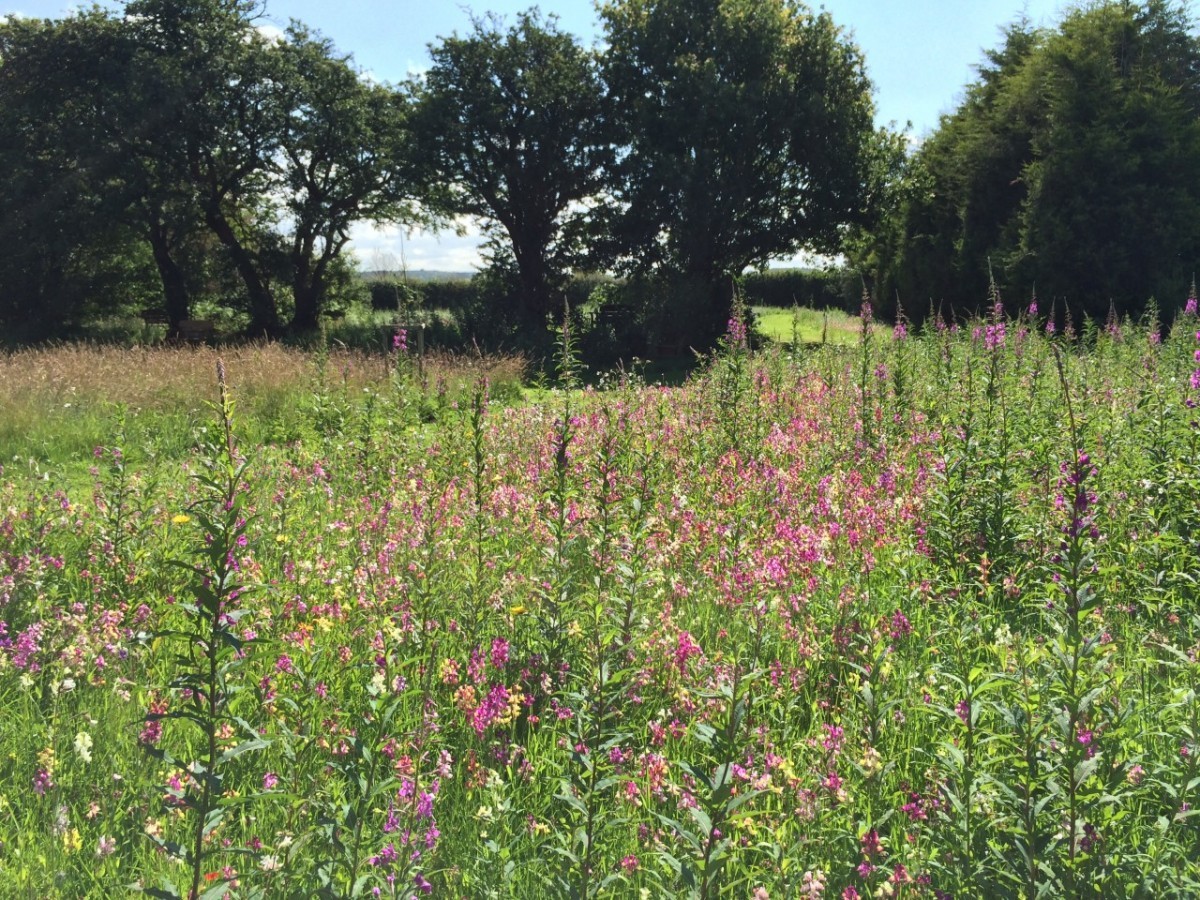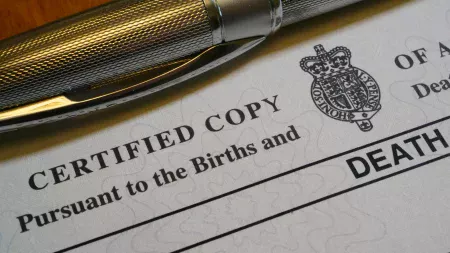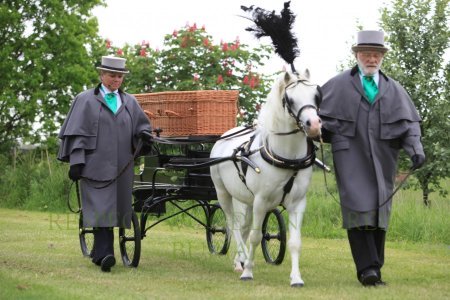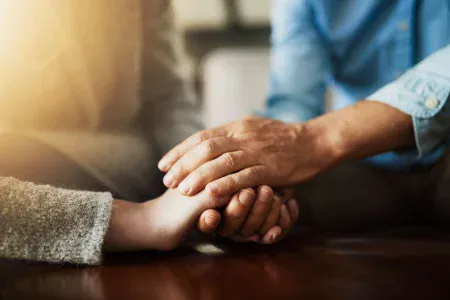At Respect Funeral Services, we understand that a funeral is not just a farewell but a meaningful opportunity to honour a loved one’s life and values.
As more people seek eco-friendly alternatives to traditional funerals, woodland burial sites have emerged as a serene and sustainable choice.
But what does it take to design a woodland burial site that is truly sustainable?
This post explores the principles, practices, and considerations that make a woodland burial ground an environmentally responsible and deeply personal resting place.
What is a Woodland Burial?
A woodland burial, often referred to as a green or natural burial, is an eco-friendly alternative to conventional burials or cremations.
Unlike traditional cemeteries with manicured lawns and stone headstones, woodland burial sites are designed to blend seamlessly with the natural environment.
These spaces, typically set in woodlands, meadows, or other rural landscapes, prioritise sustainability by minimising environmental impact and fostering biodiversity.
What we offer at Respect Funeral Services
We provide woodland green burials that include a full-service burial with a ceremony in beautiful countryside settings.
Our sites are carefully chosen to offer tranquillity and a connection to nature, ensuring a dignified and meaningful farewell that aligns with eco-conscious values.
The sustainability of a woodland burial site hinges on its ability to preserve and enhance the natural habitat.
This involves careful planning, from site selection to ongoing maintenance, to ensure the space remains a thriving ecosystem for generations.
Below, we delve into the key elements that define a truly sustainable woodland burial site.
You can book a visitation to our woodland burial sites here:
Site Selection: Choosing a Location with Purpose
The foundation of a sustainable woodland burial site lies in selecting a location that supports ecological preservation and community needs.
This decision requires balancing environmental, practical, and emotional considerations.
Environmental Considerations
- Native Ecosystems: The site should be located in an area with existing native flora and fauna to avoid disrupting delicate ecosystems. For example, choosing a site with established woodland or meadowland minimises the need for artificial landscaping, which can harm local biodiversity.
- Soil and Hydrology: The soil must be suitable for natural decomposition, with good drainage to prevent waterlogging. Additionally, the site should avoid areas prone to flooding or those near water sources to prevent contamination from decomposing remains (though natural burials avoid harmful chemicals like embalming fluids).
- Protected Status: Opting for land with protected status, such as Areas of Outstanding Natural Beauty (AONB) or conservation areas, ensures long-term preservation. This aligns with our commitment to creating lasting sanctuaries for both people and wildlife.
Practical Considerations
- Accessibility: While rural settings offer peace, the site must be accessible for families visiting loved ones. This might include pathways that blend with the landscape or proximity to public transport.
- Scalability: The site should have enough space to accommodate future burials without compromising its ecological integrity. This requires careful planning to avoid overcrowding, which could strain the ecosystem.
Emotional and Cultural Resonance
- Sense of Place: A woodland burial site should evoke calm and connection to nature. At Respect, we choose locations that offer serene views, rustling trees, and abundant wildlife, creating a space where families feel at peace.
- Inclusivity: The site should welcome people of all faiths or none, ensuring ceremonies can be tailored to individual beliefs. Our woodland burials are multi-denominational, offering flexibility for religious, humanist, or secular services.
Respect Woodland Burial Grounds
Our woodland burial grounds are nestled in pristine countryside, selected for their natural beauty and ecological value.
We ensure accessibility while preserving the site’s tranquillity, creating a space where families can commemorate their loved ones in harmony with nature.
Sustainable Design: Blending Burial with Nature
Once a site is chosen, designing it to be sustainable involves integrating burial practices with the natural environment.
This means minimising human impact while enhancing the ecosystem.
Biodegradable Materials
A cornerstone of sustainable woodland burials is the use of biodegradable materials for coffins, shrouds, and urns.
These materials decompose naturally, enriching the soil without introducing pollutants.
- Coffin Options: We offer coffins made from willow, bamboo, cardboard, all of which are 100% biodegradable and sourced sustainably. These materials avoid the environmental toll of hardwood or metal caskets used in traditional burials.
- Shrouds and Urns: For those preferring minimalism, we provide cotton or muslin shrouds and biodegradable urns for ashes, ensuring no trace is left behind as the body returns to the earth.
- No Embalming: Embalming fluids contain formaldehyde, a known carcinogen that can leach into soil. Our woodland burials forgo embalming, allowing natural decomposition to occur safely.
Natural Memorials
Unlike traditional cemeteries with stone headstones, woodland burial sites use natural markers to maintain the landscape’s integrity.
- Tree Planting: Families can plant a native tree, such as an oak or crab apple, as a living memorial. These trees support local wildlife, sequester carbon, and contribute to the site’s ecosystem.
- Minimal Markers: Where markers are permitted, we use wooden or slate plaques laid flat to blend with the surroundings.
- No Artificial Memorials: Plastic flowers, metal plaques, or other non-biodegradable items are discouraged, as they can harm wildlife and require maintenance that disrupts the ecosystem.
Landscape Management
Sustainable design extends to how the site is maintained over time.
- Low-Impact Maintenance: Mowing is kept to a minimum (e.g., once or twice annually) to allow wildflowers and grasses to thrive, supporting pollinators like bees and butterflies.
- No Chemicals: Fertilisers, pesticides, and herbicides are avoided to protect soil health and wildlife. This aligns with the principles of organic land management.
- Rewilding: Some areas of the site may be left to rewild, encouraging native species to flourish and creating a self-sustaining ecosystem.
Our woodland burial sites are designed with sustainability at their core.
We use only biodegradable materials, encourage natural memorials like tree planting, and manage our sites with low-impact practices to foster biodiversity and preserve the natural beauty of the landscape.
Ecological Impact: Enhancing Biodiversity
A truly sustainable woodland burial site does more than minimise harm, it actively enhances the local ecosystem.
This involves creating a space that supports wildlife, sequesters carbon, and contributes to environmental restoration.
Supporting Wildlife
- Habitat Creation: By planting native trees and maintaining wildflower meadows, the site becomes a haven for birds, insects, and mammals. For example, species like owls, badgers, and deer thrive in well-managed woodland burial grounds.
- Food and Shelter: Native plants provide food for pollinators, while trees offer nesting sites for birds. This creates a balanced ecosystem where burial supports life.
- Avoiding Disruption: Burial plots are spaced to prevent soil compaction and root damage to existing trees, ensuring the habitat remains undisturbed.
Carbon Sequestration
- Tree Growth: Each tree planted as a memorial absorbs carbon dioxide, helping keep our woodlands green. Over time, a woodland burial site can become a significant carbon sink.
- Avoiding Emissions: Unlike cremation, which produces approximately 245kg of carbon per process, woodland burials have a near-zero carbon footprint, making them a climate-friendly choice.
Long-Term Conservation
- Protected Status: Many Respect woodland burial sites are part of conservation areas or have protected status, ensuring they remain undeveloped and ecologically intact forever.
- Future Maintenance Funds: A portion of burial fees contributes to a fund for ongoing site maintenance, guaranteeing long-term care without relying on chemical interventions or intensive landscaping.
Our woodland burial grounds are living sanctuaries that enhance biodiversity.
By planting native trees, maintaining wildflower meadows, and protecting our sites for future generations, we create spaces that honour both the departed and the planet.
Community and Ceremony: Personalising the Experience
Sustainability extends beyond ecology to the emotional and cultural needs of families.
A woodland burial site must offer flexibility for personalised ceremonies while fostering a sense of community and connection.
Flexible Ceremonies
- Tailored Services: Our woodland burials accommodate a range of ceremonies, from religious to humanist to informal gatherings. Families can include readings, music, or moments of silence, creating a farewell that reflects the deceased’s personality.
- Outdoor Settings: Ceremonies often take place in the open air, surrounded by trees and wildlife, though some sites offer yurts, gazebos, or small chapels for shelter.
- Inclusive Approach: We welcome all faiths and beliefs, ensuring every ceremony feels authentic and meaningful.
Supporting Grief and Remembrance
- Tranquil Spaces: The natural setting of a woodland burial site aids grieving by providing a peaceful environment. Studies show that nature exposure improves wellbeing, making these sites ideal for reflection.
- Visitation: Families can visit freely. Maps or GPS coordinates help locate graves, while the entire woodland serves as a collective memorial for those who prefer not to mark specific plots.
- Community Engagement: Some sites host events like memorial walks or conservation days, fostering a sense of shared purpose among visitors.
Affordability and Accessibility
- Cost-Effectiveness: Woodland burials are often more affordable than traditional burials, as they avoid embalming, elaborate coffins, and concrete vaults.
- Inclusivity for All: We offer options for pet burials and joint human-pet sections, recognising the bond between people and their animals.
Our woodland burials provide a flexible, inclusive, and affordable way to say goodbye.
With personalised ceremonies in serene countryside settings, we create meaningful experiences that support grieving families and honour the deceased’s values.
Challenges and Considerations
While woodland burials offer significant benefits, designing and maintaining a sustainable site comes with challenges that must be addressed.
Regulatory Compliance
- Local Regulations: Burial sites must comply with environmental and public health regulations, such as maintaining safe distances from water sources. We work closely with local authorities to ensure compliance.
Balancing Human and Ecological Needs
- Visitation vs. Preservation: High footfall from visitors can damage delicate ecosystems. We design pathways and limit vehicle access to protect the site while ensuring accessibility.
- Grave Marking: While some families prefer unmarked graves, others want a specific location to visit. We offer solutions like tree planting or discrete markers to balance these needs.
Long-Term Viability
- Maintenance Costs: Sustainable management requires ongoing funding, this ensures sites remain cared for without compromising their ecological integrity.
- Community Buy-In: Educating families about the benefits of woodland burials is crucial, as some may be unfamiliar with the concept. We provide clear guidance and support to help families make informed choices.
We address these challenges by adhering to strict regulations, balancing human and ecological needs, and securing long-term funding for our sites.
Our compassionate team guides families through the process, ensuring a seamless and meaningful experience.
Why Choose a Woodland Burial with Respect?
A sustainable woodland burial site is more than a resting place, it’s a legacy that honours both the departed and the planet.
By prioritising native ecosystems, biodegradable materials, and biodiversity, these sites create a harmonious balance between human needs and environmental stewardship.
Our woodland green burials combine the beauty of nature with the dignity of a full-service ceremony.
Set in carefully selected countryside locations, our sites provide a serene and sustainable alternative to traditional funerals.
Whether you choose a direct burial, direct cremation, or woodland burial, we ensure every detail reflects your loved one’s values and wishes.
If you’re considering a woodland burial or want to learn more about our eco-friendly funeral options, contact Respect Funeral Services today.
Enquire For Funeral Services With Respect
Reach out to us directly by calling 01427 612992 or completing the enquiry form via our contact page here.
Q&A’s For Respect Burial Sites
Q1. What is the difference between a woodland burial and a traditional burial?
A woodland burial, also known as a green or natural burial, prioritises environmental sustainability and integration with nature. Unlike traditional burials, which often involve embalming, hardwood or metal coffins, and concrete vaults, woodland burials use biodegradable materials like willow coffins or cotton shrouds and forgo embalming to allow natural decomposition. Traditional burials typically take place in manicured cemeteries with stone headstones, while woodland burials occur in natural settings like woodlands or meadows, with memorials such as native trees or discreet wooden plaques.
Q2. How do woodland burial sites support local wildlife?
Woodland burial sites enhance local wildlife by creating and preserving habitats that support biodiversity. Native trees planted as memorials provide food and shelter for birds, insects, and mammals, while wildflower meadows attract pollinators like bees and butterflies. Low-impact maintenance, such as minimal mowing and no chemical pesticides, allows ecosystems to thrive. Burial plots are spaced to avoid soil compaction, protecting existing flora and fauna. Over time, these sites become sanctuaries for species like owls, badgers, and deer, contributing to regional conservation efforts.
Q3. Can I personalise a woodland burial ceremony to reflect my loved one’s beliefs?
Yes, woodland burials are highly flexible and can be tailored to reflect any belief system or personal preferences. Ceremonies can range from religious services (Christian, Muslim, Hindu, etc.) to humanist, secular, or informal gatherings. Families can incorporate readings, music, or moments of silence to create a unique farewell. The natural setting enhances the experience, with ceremonies often held outdoors among trees or in sheltered spaces like yurts if needed. This adaptability ensures the ceremony feels authentic and meaningful.
Q4. Are woodland burials more affordable than traditional funerals?
Woodland burials are often more affordable than traditional funerals because they avoid costly elements like embalming, elaborate coffins, and concrete vaults. For example, a biodegradable coffin made of willow or cardboard is significantly cheaper than a hardwood or metal casket. Additionally, natural memorials like tree planting are less expensive than stone headstones.
Q5. How do I know if a woodland burial site is truly sustainable?
A truly sustainable woodland burial site prioritises ecological preservation, uses biodegradable materials, and enhances biodiversity. Key indicators include: selecting locations with native ecosystems, avoiding chemicals like pesticides or embalming fluids, and using low-impact maintenance practices (e.g., minimal mowing). The site should support wildlife through native tree planting and wildflower meadows and have protected status or a fund for long-term conservation.
Book A Visitation At One Of Our Burial Parks
North Nottinghamshire & South Yorkshire Burial Park
Lincolnshire & North Lincolnshire Burial Park
Contact Respect Directly
After Care
If you need extra help, there are excellent resources available:
- NHS: The NHS offers advice on coping with bereavement, including mental health support. Visit their page on Dealing with Grief and Loss for practical tips and helpline details.
- Respect: the Respect Guide, What To Do When Someone Dies covers benefits like the Bereavement Support Payment.
- Cruse Bereavement Support: A UK charity dedicated to grief, Cruse provides free counselling and resources. Learn more at cruse.org.uk.





